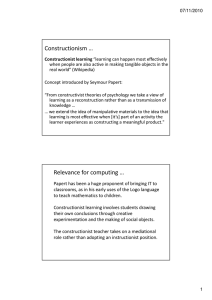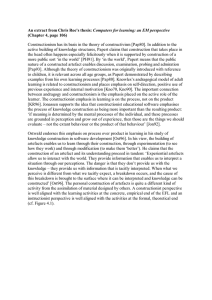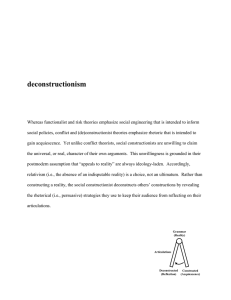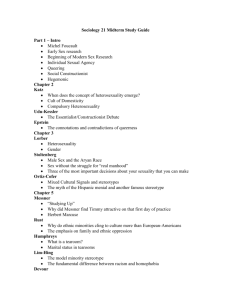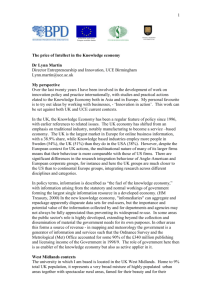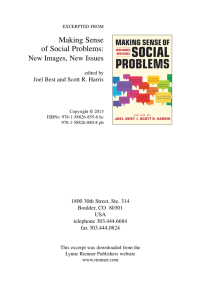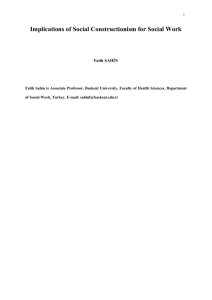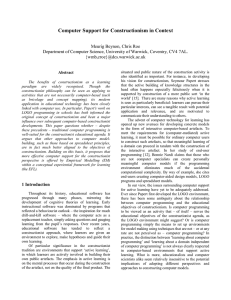Lecture 13
advertisement
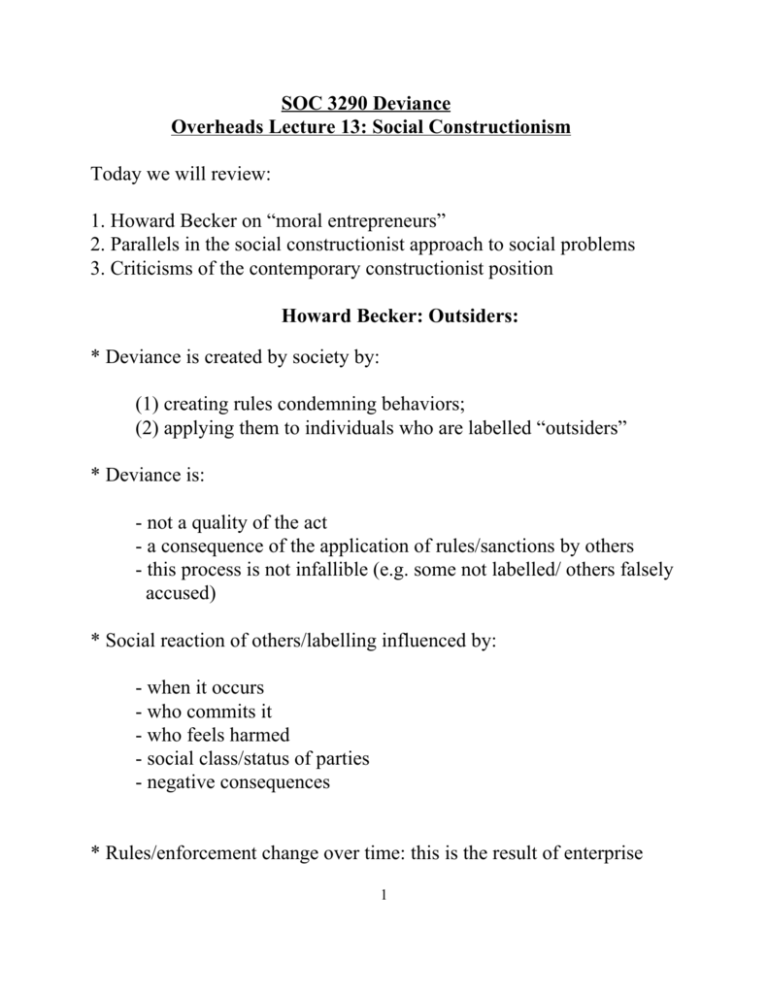
SOC 3290 Deviance Overheads Lecture 13: Social Constructionism Today we will review: 1. Howard Becker on “moral entrepreneurs” 2. Parallels in the social constructionist approach to social problems 3. Criticisms of the contemporary constructionist position Howard Becker: Outsiders: * Deviance is created by society by: (1) creating rules condemning behaviors; (2) applying them to individuals who are labelled “outsiders” * Deviance is: - not a quality of the act - a consequence of the application of rules/sanctions by others - this process is not infallible (e.g. some not labelled/ others falsely accused) * Social reaction of others/labelling influenced by: - when it occurs - who commits it - who feels harmed - social class/status of parties - negative consequences * Rules/enforcement change over time: this is the result of enterprise 1 * Two types of “Moral entrepreneurs”: (1) Rule creators (2) Rule enforcers * Rule creators: - focus on a “social evil” existing rules don’t cover - emphasis on content of rules - lobby for new rules “to help others” - employ professionals (e.g. lawyers, psychiatrists) - new rules may/may not be enacted as a result - new rules/application filtered through others’ interests as well - enforcement machinery may be put in place if successful - gains may be administratively chipped away * Rule enforcers: - result of institutionalization of new rules - enforcement “just a job” for many (less fervour) - must justify the existence of their position (doing a necessary job, but not so well as to make their role unnecessary) - must earn the respect of those they encounter (affects labelling) - prosecutorial discretion/prioritization aids these ends - may run afoul of original rule-creators/ set off new crusade * In the end, deviance = the result of enterprise surrounding: (1) Rule creation (2) Rule enforcement 2 Joel Best: Typification and Social Problems Construction: * Traditional definition of social problems = “objective”: - assumes the essence of social problems lie in objective conditions - assumes that some conditions “really are” problems * Problems with this: - minimizing/ignoring subjective nature of social problems - “objective” conditions defined as problems have little in common * Phenomenological approach: (Spector and Kitsuse): - focus on processes by which people designate problems - individual social problems are a product of definitional activities (“claims-making” re: “putative conditions”) - “objective conditions are irrelevant” * “Natural history” of social problems (4 stages): (1) collective attempts to remedy perceived undesirable condition (2) recognition/response by official institutions (3) re-emergence of claims in response to institutional solution (4) claimants’ attempts to develop alternative institutions * Advantages of this approach: - draws attention to something all social problems have in common - suggests new research questions - provides framework for a general theory of social problems 3 * Typification: - claims-makers shape our sense of what the problem is - any social condition is a potential subject for many different types of claims-making (e.g. drug abuse as moral, medical, educational, class, and/or political problem) - myriad sociological theories of crime offer another example - problems typified through (i) naming; and (ii) exampling - typification = the central aspect of social problems construction Debates About Constructionism: * Constructionist approach relatively new/controversial * Critics attack this approach in several ways: (1) It ignores/minimizes “really harmful” social problems. Yet: - previous objectivist research has failed general application - what is “really harmful” merely reflects successful claims (2) Constructionism/ objectivism = “two sides of the same coin.” - inconsistent/ only pays lip service to constructionist issues - constructionism has new agenda/ different questions asked (3) Constructionism is itself internally inconsistent: focuses on subjective claims while assuming knowledge of objective conditions: E.g. X remained unchanged (unstated assumption) X became defined as a social problem once claims made 4 Thus, truth status of one factor made problematic, the other not (“Ontological gerrymandering”) * This last critique opened a division in the constructionist approach to social problems. Three camps emerged (1) Strict Constructionists: avoid making assumptions about social reality (easier said than done); (2) Debunkers: draws distinction between social reality and claims (essentially ignoring the problem/ assuming you know social reality/ equating social construction with error); (3) Contextual Constructionists: honestly acknowledge making some assumptions about social conditions to locate claimsmaking in its social context. (Done “with reasonable confidence” to imperfectly describe context of claims). * Best sides with contextual constructionists: - impossible to avoid making implicit claims re: social conditions, so be honest about it - analytic purity of strict constructionists limits its usefulness * Despite difficulties, constructionist approach can be useful: - offers claims-makers guidelines for what works/doesn’t - as a perspective to better understand the world - as an active research tradition - as holding the promise of a general theory of social problems 5
